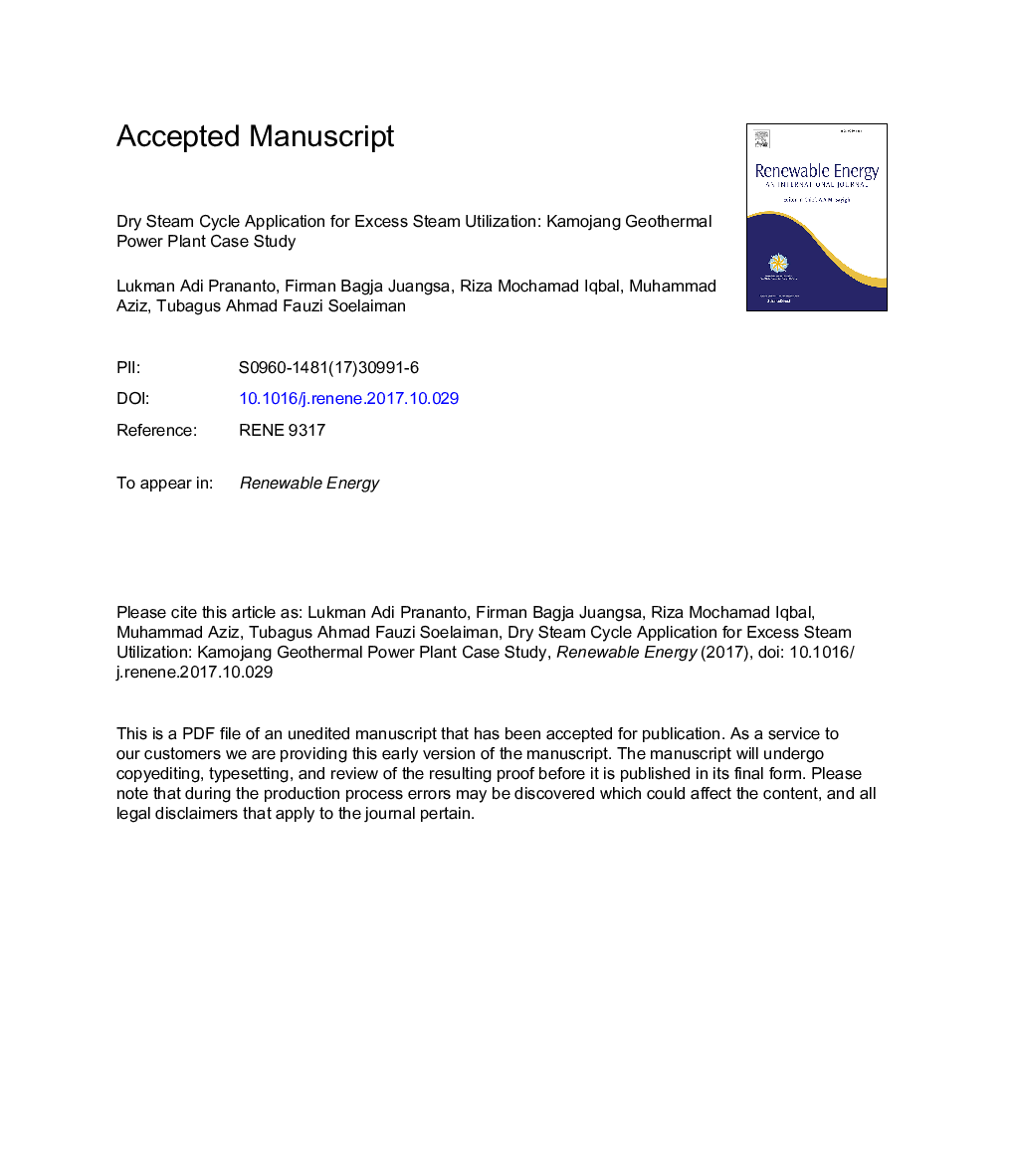| Article ID | Journal | Published Year | Pages | File Type |
|---|---|---|---|---|
| 6764992 | Renewable Energy | 2018 | 32 Pages |
Abstract
This study investigated the utilization of available excess steam by the Kamojang geothermal power plant, which, owing to the vapor-domination of the steam, utilizes a dry steam cycle. A model of the system was validated against actual Kamojang Unit-2 data and found to produce accurate results within a low discrepancy level (<5% error). The modeled performance of the proposed system was obtained through optimization of the non-condensable gases (NCGs) gas removal system (GRS) based on heat balance calculations and assuming content of NCGs in the working fluid based on real operational data. To optimize the model, five GRS configurations were investigated: one-stage steam ejector, two-stage steam ejector, one-stage liquid ring vacuum pump (LRVP), two-stage LRVP, and hybrid system (ejector plus LRVP). To set constraints on the optimization, the allowable condenser pressure was defined based on the cooling water temperature and the maximum temperature difference. Under the best design configuration (a one-stage LRVP), the proposed plant generated a gross electric power of 15.9â¯MW with a parasitic power consumption of 755.2â¯kW. The proposed system to convert unused discharge steam into electricity suggests that its installation will result in an increase of the Kamojang geothermal power plant capacity.
Related Topics
Physical Sciences and Engineering
Energy
Renewable Energy, Sustainability and the Environment
Authors
Lukman Adi Prananto, Firman Bagja Juangsa, Riza Mochamad Iqbal, Muhammad Aziz, Tubagus Ahmad Fauzi Soelaiman,
